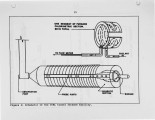| Title |
NOx Precursor Measurements in Coal Flames |
| Creator |
Hughes, Patrick; Wong, J.; Jeffrey, R.; Chui, E. |
| Publisher |
University of Utah |
| Date |
1994 |
| Spatial Coverage |
presented at Maui, Hawaii |
| Abstract |
Burner technology is constantly being revised to ensure that fossil fuels are burned in a clean and efficient manner. This is particularly true for low-NOx burner technology for coal furnaces. In order to meet the stringent pollution regulations, burner manufacturers have developed technologies which attempt to reduce the amount of NOx produced by controlling the near burner chemistry. These developments have lead to the need for measurements in the near burner region to validate the theories on which the burner technology is based and to better understand the processes involved in this region of the furnace. This report presents measurements of conventional combustion products (02, CO2, CO and NOx) and two NOx precursor species (HCN and NH3) in a coal flame. The authors attempt to use these measurements to describe the processes of formation and destruction of NOx in this flame. |
| Type |
Text |
| Format |
application/pdf |
| Language |
eng |
| Rights |
This material may be protected by copyright. Permission required for use in any form. For further information please contact the American Flame Research Committee. |
| Conversion Specifications |
Original scanned with Canon EOS-1Ds Mark II, 16.7 megapixel digital camera and saved as 400 ppi uncompressed TIFF, 16 bit depth. |
| Scanning Technician |
Cliodhna Davis |
| ARK |
ark:/87278/s65d8vdz |
| Setname |
uu_afrc |
| ID |
8079 |
| Reference URL |
https://collections.lib.utah.edu/ark:/87278/s65d8vdz |




























